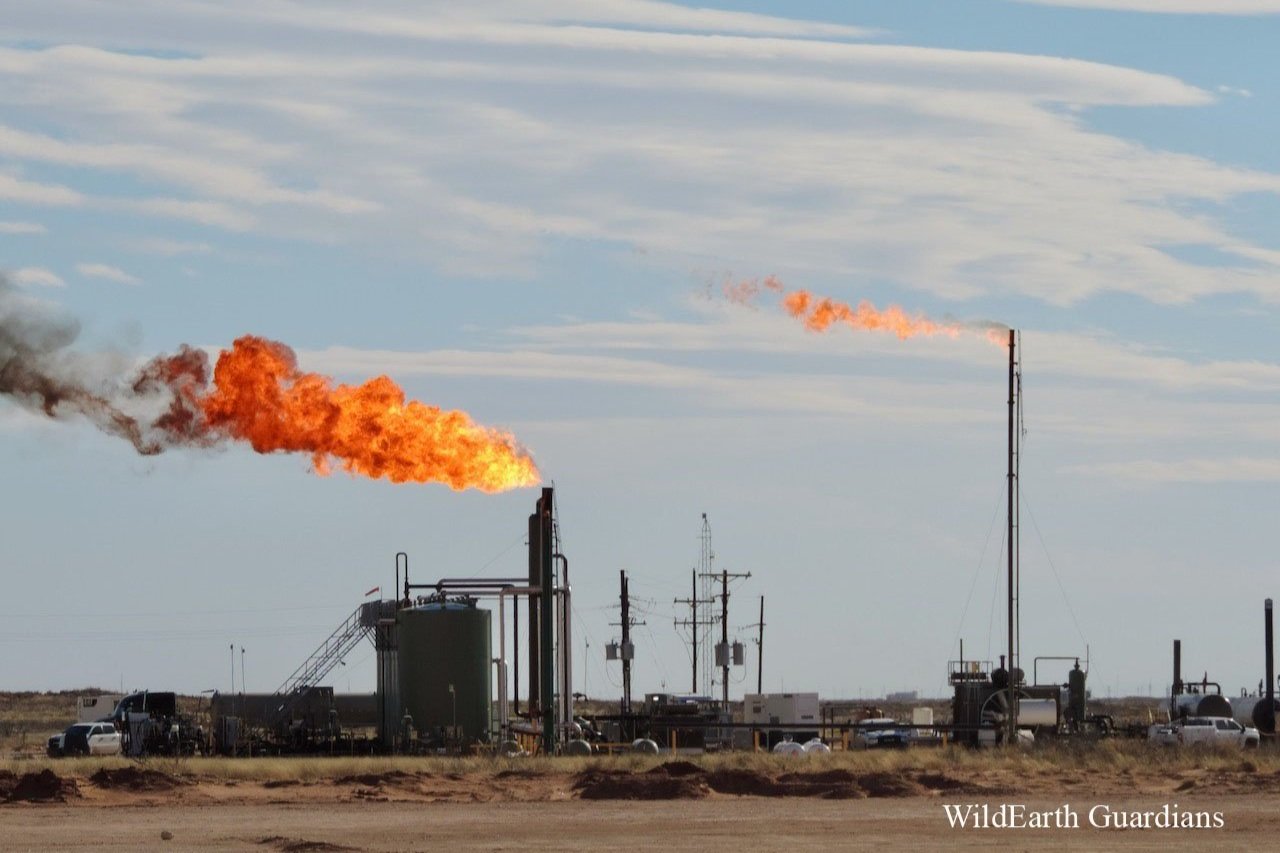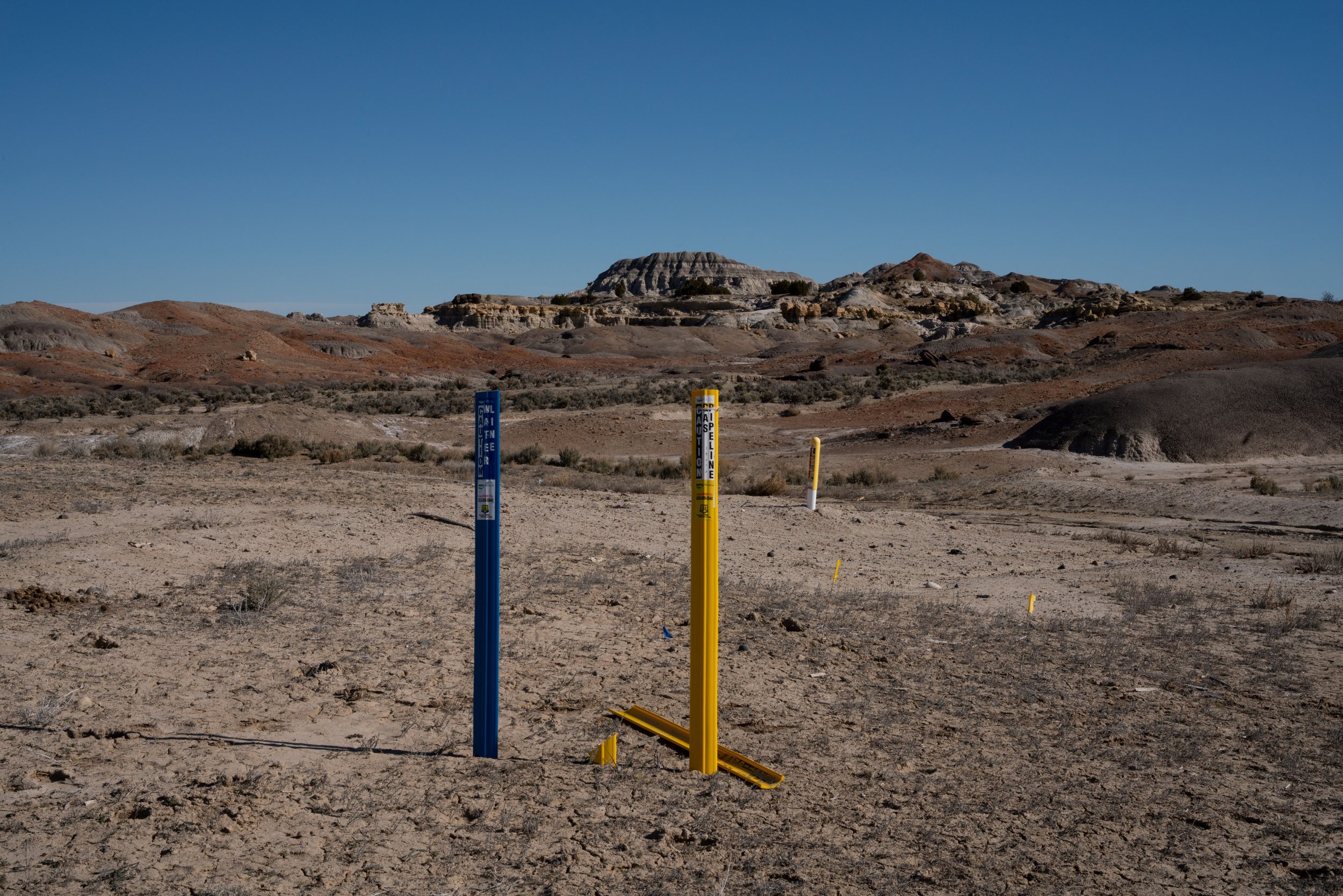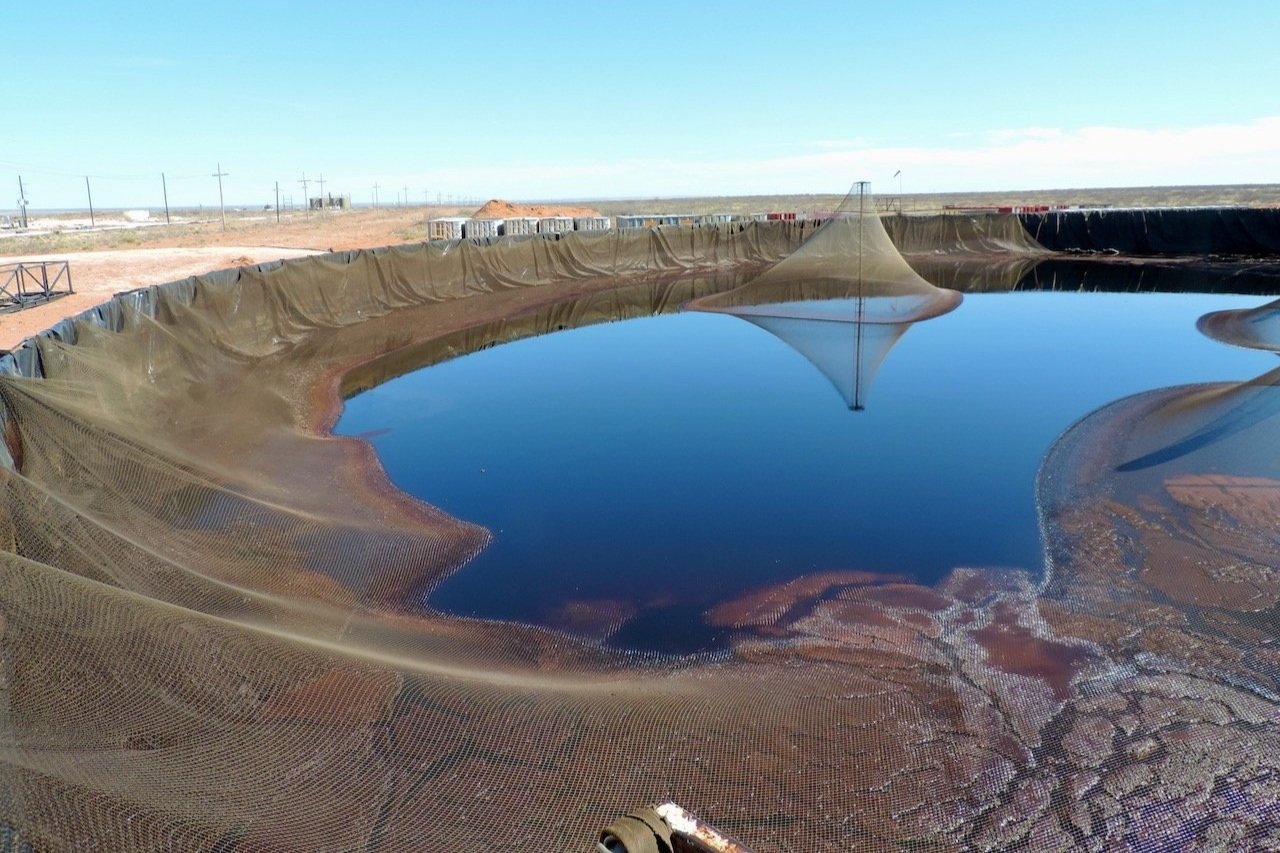
Rampant and unchecked oil and gas extraction has created a pollution crisis in New Mexico that puts all New Mexicans and the planet at risk. Youth, frontline communities and Indigenous people are disproportionately harmed by this pollution.
Toxic Waste Spills
The state allows oil and gas operators to spill toxic liquid waste an average of 4 times per day in New Mexico, endangering land, air, water, and public health. The state hasn’t taken enforcement action against polluters for these spills, and tens of thousands of spills remain unremediated, contaminating our land, air and water.
For every barrel of oil, 4-7 barrels of toxic liquid waste are produced.
Liquid waste tank in the Permian Basin, New Mexico. Photo by WildEarth Guardians.

Dangerous Air Quality
Oil production in New Mexico’s Permian Basin, one of the largest oilfields in the world, has increased nearly tenfold since 2010, leading to a surge of air and climate pollution that hurts the health of frontline communities. Air quality in several of the state’s oil- and gas-producing counties fails to meet federal standards established to protect public health, with Eddy and San Juan Counties receiving an “F” from the American Lung Association for high ozone days and Lea and Sandoval Counties getting a “D.”
Loss of Valuable Freshwater
New Mexico is in a state of extreme drought exacerbated by climate change. Our freshwater resources are precious and must be conserved, yet the oil and gas industry uses vast quantities of freshwater for fracking.
It can take up to 11 million gallons of water to drill a single well in the Permian Basin. That’s enough to fill 17 Olympic size swimming pools.
A leaking pipeline in the Permian Basin, New Mexico, likely carrying water used in drilling. Photo by WildEarth Guardians.

Devastation of Indigenous Ancestral Landscapes and Sacred Places
Oil and gas extraction and pollution permitted by the state has devastated ancestral landscapes and places held sacred by Indigenous peoples in New Mexico, causing irreparable damage to their cultures and traditional resources and violating the rights of Indigenous plaintiffs.
Fueling the Climate Crisis
The climate crisis is a fossil fuel crisis — 85% of planet heating pollution comes from oil, gas, and coal. The science is clear that new fossil fuel development is incompatible with avoiding the most catastrophic climate damages, and fossil fuel production must be phased out to maintain a livable planet. Because New Mexico is the second largest oil-producing state in the country and one of the leading gas producers, its carbon dioxide and methane pollution from oil and gas is a colossal problem.
The fracking frenzy in the Permian Basin in southeastern New Mexico is taking our state in the exact opposite direction from where we need to go, rapidly ramping up oil and gas production instead of winding it down.
New Mexico is the second fastest warming state in the nation and is particularly vulnerable to climate change damages such as worsening drought, water scarcity, more frequent and severe wildfires, and hotter temperatures. All these climate harms disproportionately affect youth, frontline and Indigenous communities and threaten the possibility of a livable future for all New Mexicans.
Resources
Groups Urge Reforms to New Mexico Oil and Gas Act in 2024 Legislative Session - Letter to state agencies from NMLAWS and multiple organizations
Drilling Towards Disaster: New Mexico’s Oil & Gas Boom Undermines the State’s Climate Goals - Report by Oil Change International
Fracking with ‘Forever Chemicals’ in New Mexico - Report by Physicians for Social Responsibility
Toxic Oil and Gas Spills Overwhelm New Mexico Regulatory Agencies - Letter to New Mexico state agencies from WildEarth Guardians and Center for Biological Diversity
Oil and Gas Pollution Surrounding Lybrook Elementary School - Letter to New Mexico state agencies from Center for Biological Diversity and community members
Oil and Gas Pollution Surrounding Schools in Eddy and Lea Counties - Letter to New Mexico state agencies from Center for Biological Diversity and Citizens Caring for the Future
New Mexico Spills Tracker - Center for Western Priorities
50 Groups Urge N.M. Governor to End Oil, Gas Extraction by 2034 - Coalition Letter and Press Release



